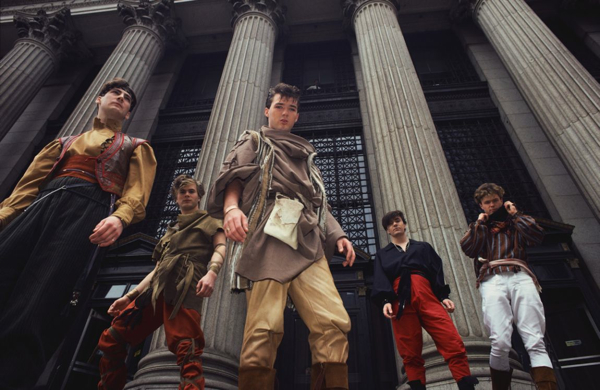Movie review by Greg Carlson
Strictly for Spandau Ballet fans, “Soul Boys of the Western World” follows the familiar “Behind the Music” formula applicable to thousands of rock and roll stories. Long on hyperbole and much shorter on subtext and context, director George Hencken’s documentary relies on unfettered access to a trove of vintage film and video (for which archive producer Kate Griffiths deserves mention). Tracing the rise and fall of the North London quintet fronted by vocalist Tony Hadley but led by guitarist and chief songwriter Gary Kemp, the movie is a guaranteed nostalgia trip for 1980s pop enthusiasts keen to hear the details of “True.”
Making its way to digital platforms in 2015 following an American South by Southwest premiere last year, the movie is Hencken’s feature directorial debut, following significant producing experience and a longtime collaboration with Julien Temple. Hencken has her work cut out from the start, since Spandau Ballet’s history lacks the lurid criminality, extensive bad behavior, and self-destructive punch of colorful personalities like the Sex Pistols. Still, the group members emerge as working class underdogs turned into wealthy sex symbols in the blink of an eye, and that rags-to-riches part of the traditional rock fable can be breathless and exhilarating.
Hencken occasionally overstates Spandau Ballet’s importance, and while the group’s success on their home turf yielded ten U.K. Top 10 singles, the impact of the band in America was more modest. The film alludes several times to the quasi rivalry between Spandau Ballet and the much more music video savvy Duran Duran, but Hencken skips past any detailed exploration of the artists initially associated with New Romanticism and the Second British Invasion. A joint appearance in 1984 on the Mike Read-hosted game show “Pop Quiz” suggests that the members of Spandau Ballet and Duran Duran were friendly, even if the former can’t identify the lyrics of “Hungry Like the Wolf.”
Hencken fares better rocketing through the early sequences showing the Bowie-inspired rise of the Blitz Kids, those fashion forward, androgyny embracing nightclubbers who paid as much attention to their hair and makeup as they did to their music. But rather than embrace the oft-maligned champagne decadence and conspicuous consumption, Hencken cooks up montages straining to associate Spandau Ballet directly with a political consciousness opposed to Thatcherism. An entire sequence is devoted to “Through the Barricades,” a song alluding to the Northern Ireland conflict but reborn when the Berlin Wall came down – a far cry from the more comprehensively expressed social concerns of the Clash.
By the time Hencken arrives at the band’s breakup, the movie has long run out of steam, but an inevitable reunion sequence shifts from the acrimony and bitterness of the songwriting royalties lawsuit that saw Gary Kemp prevail over his former mates to the victory lap of a 2010 Isle of Wight gig when differences were set aside. Did deep and abiding friendship prevail or were money and middle age the chief factors in the reconciliation? Hencken opts for the former, but not everyone will be convinced. Either way, devoted Spandau Ballet listeners won’t mind.
